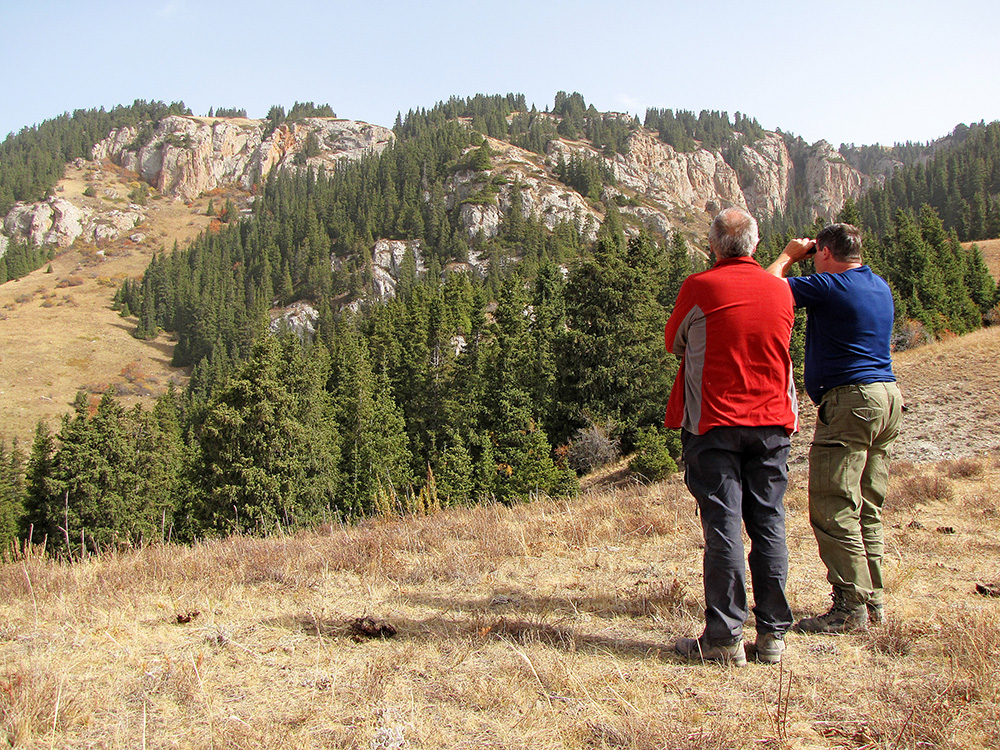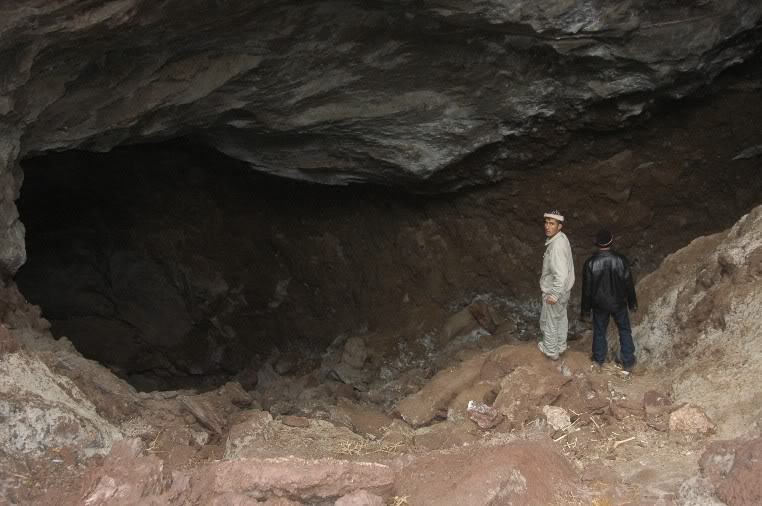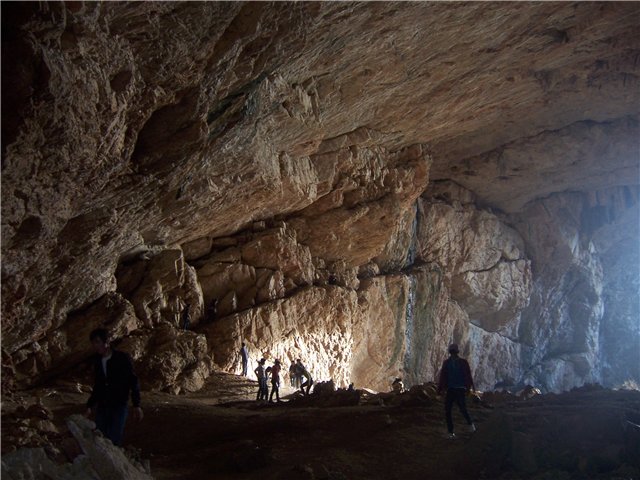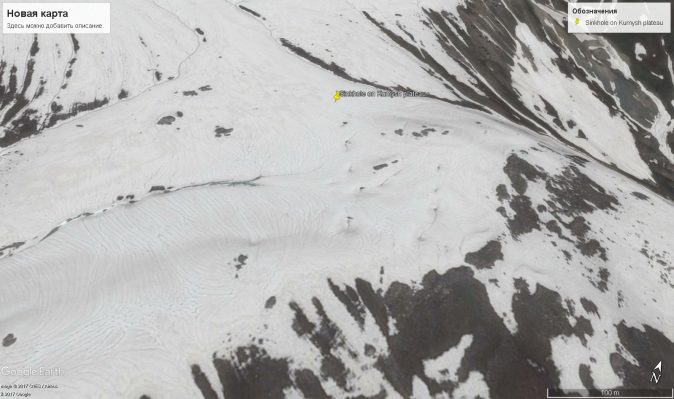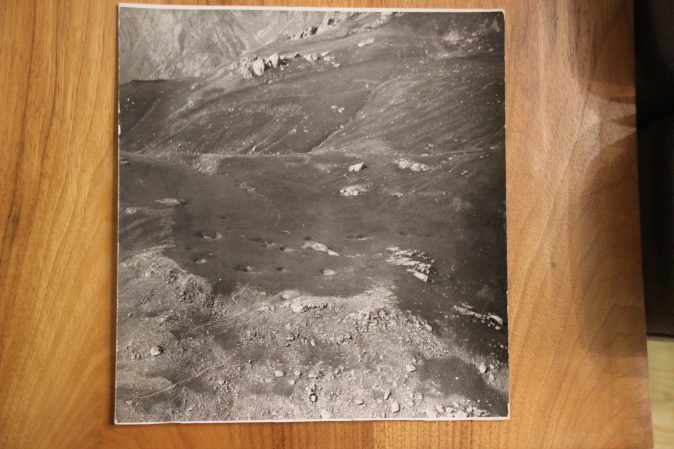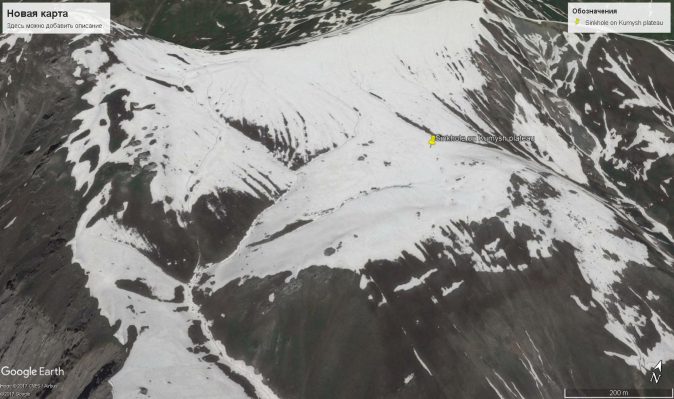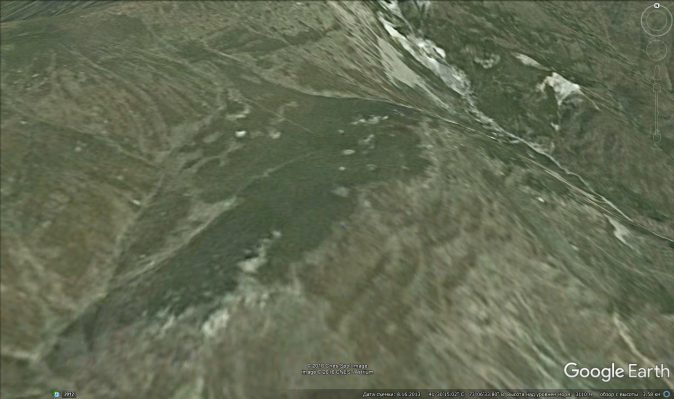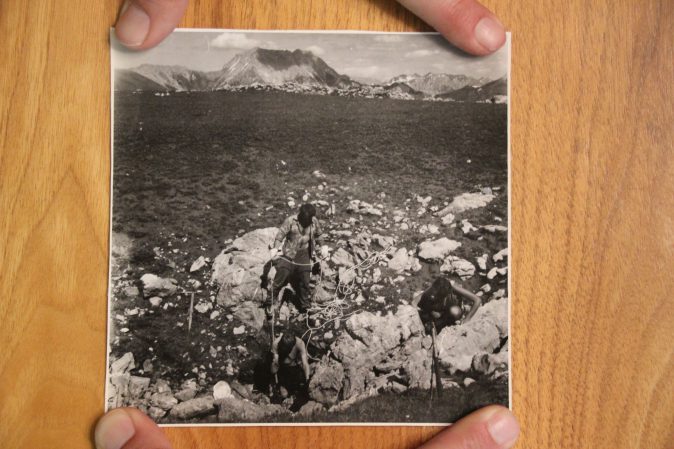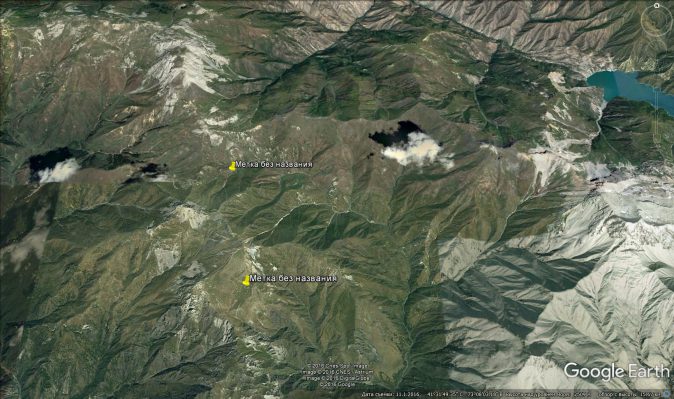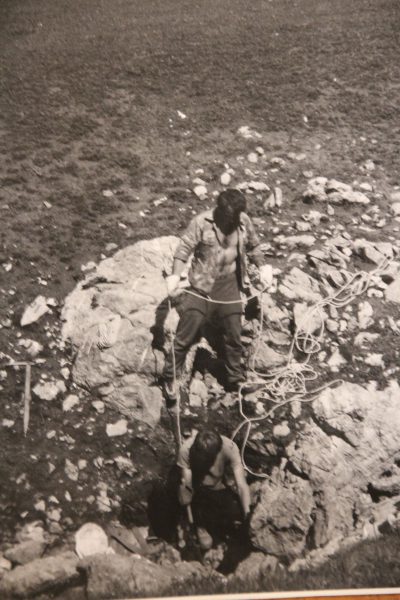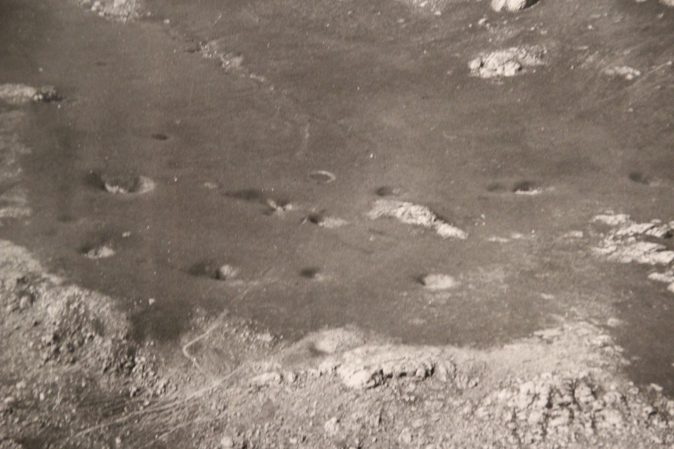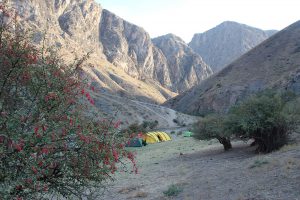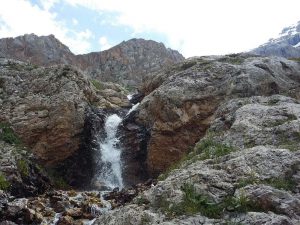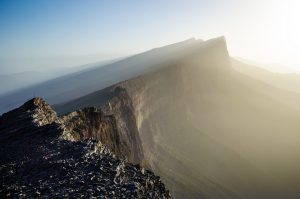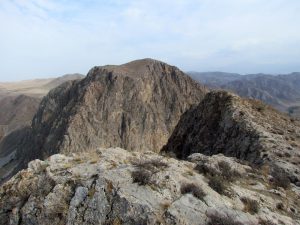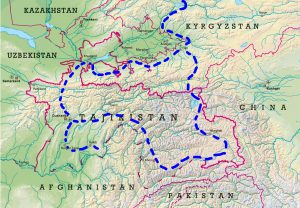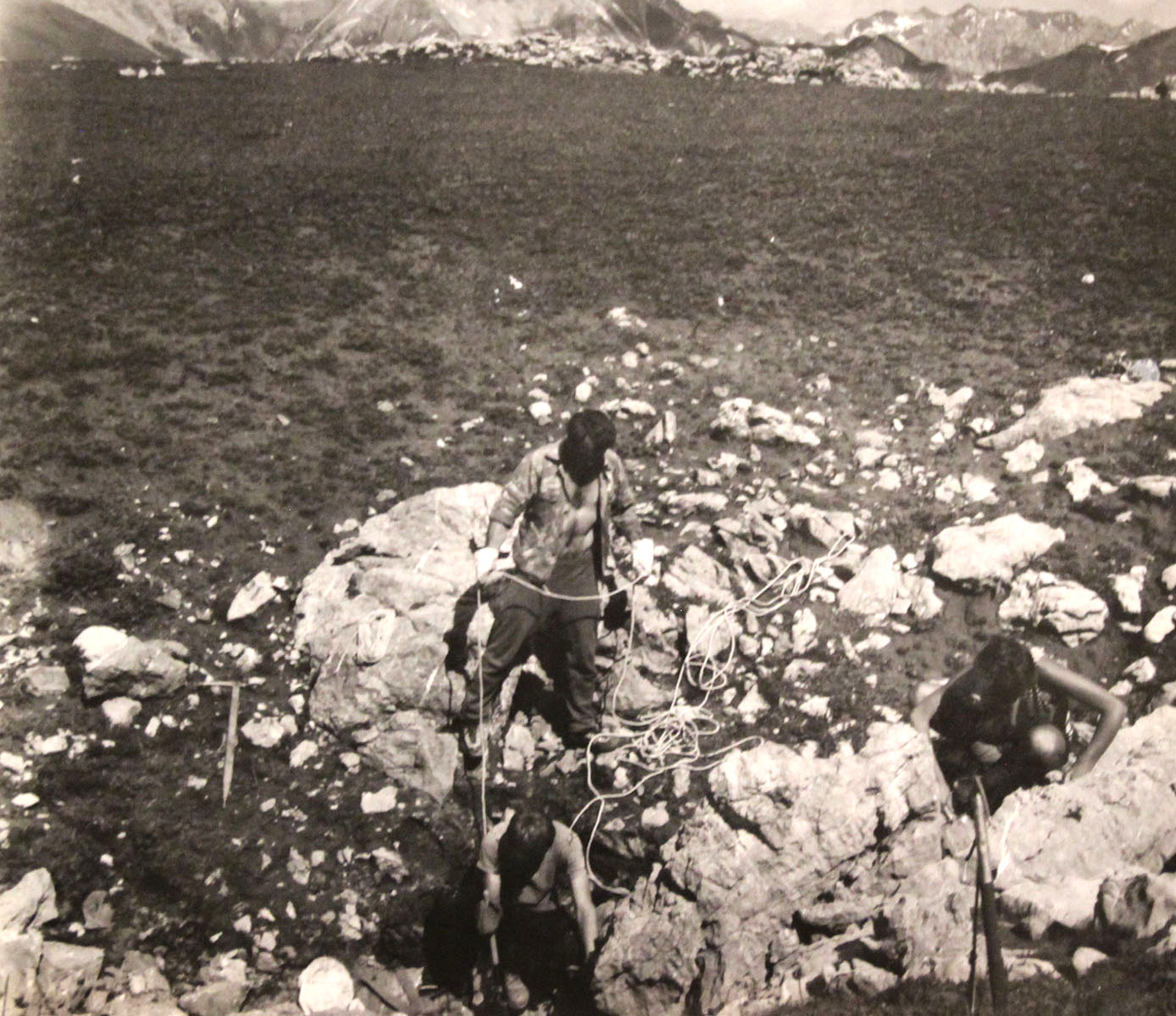
The Kumysh Plateau is located on the Fergana Range, 15 km west of Karasu Lake. The plateau was discovered by speleologists in 1989. The height of the plateau is more than 3,100 m. The size of the plateau is 0.7 x 0.4 km. 10 karst sinkholes were found on the plateau, confined to two parallel tectonic faults formed at a distance of 50 m from each other. The diameter of the sinkholes is from 10 to 20 m, the maximum depth is up to 3-4 m.
The plateau was discovered by geologists from a helicopter, and local shepherds also reported about it. In 1989, a group of five Kyrgyz speleologists climbed the Kumysh plateau to explore the plateau and attempt to get into the cave system.
As a result, all the sinkholes were covered with detrital stone material. For three days we tried to dig a passage into the underground system at the bottom of one of the promising sinkholes in our opinion. But, with the help of improvised equipment, which we had at our disposal in the form of shovels and ropes, we couldn’t go even 1 meter. Large boulders that needed to be taken from the bottom of the sinkhole were impossible to lift to the top. The height and discharged air, and of course the lack of acclimatization, affected our ability to work. At night, the air temperature at the plateau is about 0 ° C, and about 25 ° C during the day.
At that time, the tasks of our small expedition did not include digging into the passages at the bottom of the sinkholes. Therefore, after three days we left the plateau in the hope of returning. After the collapse of the USSR, none of the speleologists visited the Kumysh plateau again.
In our opinion, the depth of the earthworks to free the passage into the cave system is no more than 1-2 m. To free any passage into the underground cavity, a strong team of 8-10 people and approximately 10 days of work are needed.
The delivery of equipment to the plateau can take 2 days. On the first day, the group has to reach the Kyzyl-Ungur river valley, which means “red cave”. On the second day, using local horses, the goods need to be delivered to the plateau.
Drinking water on the plateau is present only until July, then water can be extracted from the snow that have not melted yet. Any vegetation except grass on the plateau is missing.
The plateau rises above the neighboring river valley by more than 1500 m. The plateau is composed of limestone of the silurian-devonian age (S2-D1). The thickness of the limestone is about 1000 m. Therefore, if there is a cave system under the Kumysh plateau, it will represent a depth of no more than 1000 m.
The most favorable time for the expedition is in July – August. The location of the Kumysh plateau can be viewed at the coordinates: 41 ° 30’22.25 “N 73 ° 6’35.53” E
Besides the excavation of the sinkholes on the Kumysh plateau, we also plan to search for new caves in its vicinity and on the southwestern slopes of the Fergana Range. Locals are ready to tell us about the caves in the Kuraves river basin, in which as they say there is a hidden treasure. Local hunters keep secret the location of the caves.
In this karst area there are excellent sites for a base camp, plenty of water and walnut forests. There are several caves up to 200 m long. In some of them, perennial ice has been found, as well as the remains extinct animals.
Our Foundation invites everyone who is interested to take part in the search for new karst caves on one of the most interesting mountain ranges of the Tian Shan. Anyone can take part in the expedition. The meeting of the participants of the expedition has to take place in Bishkek, the capital of Kyrgyzstan. Our Foundation will provide visa support to all participants if it is necessary to entry into the country. Our car will meet you at the airport and deliver to the hotel. Expedition vehicles – Mercedes Sprinter mini-buses, as well as an off-road vehicle for overcoming difficult sections of the road.
We will provide all expedition members with good RedFox tents, as well as comfortable living and working conditions in the base camp. Our cook will provide all participants with three excellent meals a day. The cook is responsible for the quality of food, cleanliness in the kitchen, fresh products, and also provides field dinners at radial outlets.
For the expedition, we must rent horses to deliver our cargo. During the expedition, we plan to redeploy the base camp, if this is required during the research process.
Objectives and goals:
- 1. Study of karst sinkholes on the Kumysh plateau.
- 2. Explore the nearby known caves, which are spoken by locals.
- 3. Search and research of new caves.
- 4. Exploration of the Kuraves River Valley.
- 5. Geological research.
- 6. Hydrogeological research.
- 7. Speleobiological research.
Expedition dates can be changed. If the group is one – from one club, association, federation, then the group has the right to change the dates of the expedition. If the group is mixed, then we rely on our capabilities and the capabilities of the majority of potential participants. At the moment we have indicated the most favorable season of the year according to the climatic conditions in a particular geographical area. The best time of the expedition is the first half of July.
